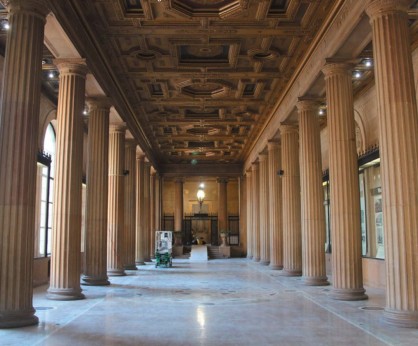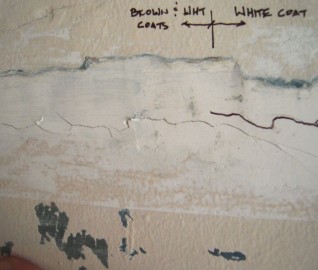
Formed and molded into an unlimited variety of shapes and decorative finishing techniques, plaster can be a key aspect of interior design. However, plaster is also vulnerable to loss, and historic finishes can be damaged by water infiltration or inappropriate modifications to building structures or mechanical systems.
In this two-part article, architect engineer Timothy Crowe and architect Kenneth Itle present case studies that examine two different plaster remediation projects that presented technical challenges where performance assessments, mock-ups, laboratory testing, and structural modeling proved valuable to verify the adequacy of the proposed repairs. The project in Part 2 includes corrective measures to restore an ornamental interior plaster ceiling within the Michael J. Howlett Building in Springfield, Illinois.
This article was originally published in the Fall 2016 issue of Licensed Architect magazine, the official publication of the Association of Licensed Architects.
RELATED INFORMATION
-
 Our professionals balance the need to provide practical, long-term solutions with the ability to... MORE >Services | Historic Preservation
Our professionals balance the need to provide practical, long-term solutions with the ability to... MORE >Services | Historic Preservation -
 Timothy M. Crowe, Associate PrincipalWJE Northbrook MORE >People | Timothy M. Crowe, Associate Principal
Timothy M. Crowe, Associate PrincipalWJE Northbrook MORE >People | Timothy M. Crowe, Associate Principal -
 Kenneth M. Itle, Associate PrincipalWJE Northbrook MORE >People | Kenneth M. Itle, Associate Principal
Kenneth M. Itle, Associate PrincipalWJE Northbrook MORE >People | Kenneth M. Itle, Associate Principal -
 Case studies examine two different plaster remediation projects (part 1 of 2). MORE >Articles | Assessment and Repair of Historic Plaster Systems (Part 1)
Case studies examine two different plaster remediation projects (part 1 of 2). MORE >Articles | Assessment and Repair of Historic Plaster Systems (Part 1)



































